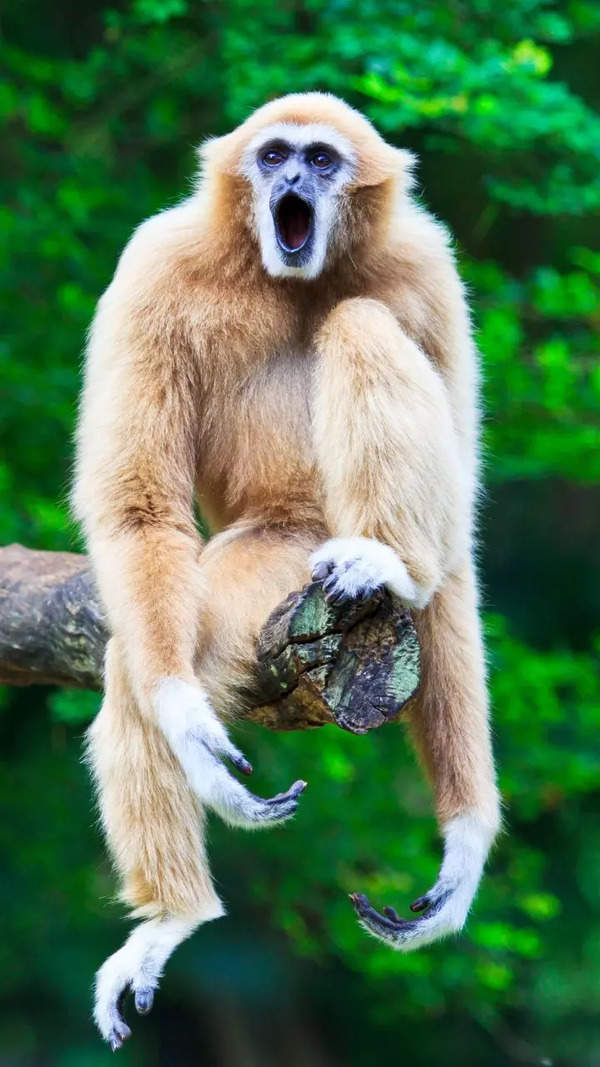Trending
10 most venomous animals in the US from rattlesnakes to jellyfish
The United States has a variety of venomous wildlife, including hornets, rattlesnakes, black widow spiders, Gila monsters, jellyfish, stingrays, lionfish, fire coral, puss caterpillars, and blue-ringed octopuses. These creatures have toxins that cause significant pain, paralysis, or even death. Awareness and caution are crucial when encountering them to prevent harm.
The United States also has a rich diversity of wildlife, some of the most venomous animals in the world. From the most poisonous snakes in the woods to deadly ocean animals in the seas, they all are the most venomous animals in the U.S. and have powerful toxins that cause immense pain, paralysis, and death in certain cases. While their attacks are rare, nature enthusiasts and outdoor enthusiasts must be aware of the harm they can cause with their venom. So let's explore about 10 of the most venomous animals in the United States, how they kill the human body through their venom, and how you should behave if you encounter them in the wild.
Deadly and poisonous U.S. animals
Hornets
Hornets, genus Vespa, are yellow jacket-like relatives of wasps. These powerful insects feed on tree sap and leaf sap as herbivores but are also predators that sting flies, bees, and other insects. While hornets are not fond of human association, their sting is very deadly, particularly in people with venom allergy. Hornet stings in the United States claim about 60 lives each year. Their painful sting administers a venom that will lead to serious allergic reactions, including anaphylaxis. Though they will only bite if provoked, a disturbed rattlesnake den can bring forth a string of stings and hence be a drastic danger to human life.
Prairie rattlesnake
The native United States prairie rattlesnake is an unsafe snake that one can identify by seeking out dark blotches that are round within the area close to its tail. The snake also possesses heat pits between the nostrils and eyes, and it can also sense warm-blooded prey such as mice, prairie dogs, small birds, and other mammals. It also senses and locates prey using its tongue. Not typically aggressive, the Prairie Rattlesnake only bites when provoked. When it bites, it also releases its venom fangs from the roof of its mouth and injects 20-50% venom. Biting is extremely painful, there is swelling, and, worst of all, it must be treated by a doctor.
Black widow spider
Black widow spider is simple to recognize with the red hourglass spot on its underside and the shiny black body. The black widow belongs to a family of spiders with some of the deadliest spiders on earth. Black widow venom introduced by the bite of the black widow has a toxic chemical in it that will paralyze a human. Black widows feed on insects like flies, mosquitoes, and larger organisms like grasshoppers that fall into their web. The spider bites and administers venom on catching the prey, paralyzing the prey. In humans, a black widow spider's bite will result in target-shaped lesions and swelling, accompanied by redness. Pinprick pain from the bite results. Black widows bite when handled or threatened.
Gila monster
The Gila monster, whose black skin is dotted with beadlike scales and patches of bright spots or bands of pink, orange, or yellow, might appear innocent. But the bright coloration likely is meant as a warning to predators. Although they appear harmless, Gila monsters can deliver a painful, toxic bite. They bite and inject venom with their fangs, and the more they chew, the greater the pain. The venom is painful to humans and will bring them a great deal of pain and suffering. Gila monsters bite defensively and while their venom is not instantly fatal, they can deliver tremendous amounts of pain and swelling. Medical attention must be obtained as soon as possible after being bitten.
Jellyfish
Jellyfish appear to be harmless since they move very slowly on water, but they have a sting that is highly poisonous and lethal. Although jellyfish are transparent and soft, they possess hard venomous tentacles that cause very painful stings if contacted. Jellyfish stings cause different reactions from mild irritation to severe pain. The venom results in severe reactions such as swelling, breathlessness, or cardiac failure in advanced cases, and its impact is fatal if left untreated. The impact of the sting differs according to the species of the jellyfish, whereby some species have fatal impacts. Medical attention must be sought urgently to prevent pain and complications.
Stingrays
Stingrays are flat, broad bodies of fish that possibly may not resemble any fish but are yet fish. Stingrays belong to the sharks' family and, like sharks, have no bones in their bodies but survive on cartilage. They consume their principal prey, which are clams, shrimp, crabs, oysters, and mussels, all of which they crush using their strong jaws. Stingrays have venom in their tails and strike back with the same at those who attack them when threatened. The sting is bound to be dangerous to human beings, the venom inducing pain and swelling. Stings are rarely fatal, though the venom will hurt, and medical attention is necessary immediately to prevent complications or infection.
Lionfish
Lionfish have most prominent brown, maroon, and white stripes or bands along the body, and fleshy tentacles over the eyes and under the mouth. Although they are being reared in aquariums, their spines are venomous and lead to intense stinging. Lionfish are carnivorous and consume tiny sea creatures like minute fish and crustaceans, which permit stimulation of coral reef health. Lionfish sting is extremely painful. Poison is administered in the form of injection upon piercing the skin of the predator or an unsuspecting person occasionally when the spine of the fish breaks through it. Sting brings about a scorching, burning, and aching feeling.
Fire coral
The very name of the fire coral says it is an all. The fire coral, yet it is not coral, but a hydrozoan relative of the jellyfish. Fire coral will tend to develop a yellow-green or brownish-branched form. Fire coral is rubbery and will alter its form, producing different forms depending on the currents of water. On strong currents, it develops like a thin crust of paper, but on weak currents, it forms extremely long, extremely thin strands that form a lattice pattern. On relatively strong currents, it produces thick branches or columns. Fire coral is harmless-looking, but if touched, it injects venom, which causes a burning effect on the skin. The sting is said to result in an allergic rash brought on by touch within hours to minutes of exposure.
Puss caterpillar
Puss caterpillar owes its name to the fact that it resembles a cat. The greyish-white to white, fuzzy large moth features bigger female specimens with irregular grey hind- and forewings. The moths hatch out leaves whole from stems before pupating within a hard, wood cocoon spun on poles or tree trunks, of wood larvae fed on. For defense, the brightly colored caterpillars elevate their heads and wave pinkish, flagellate tails around in warning. They even spit formic acid upon perceived foes. Pain due to the sting of a Puss caterpillar can last from several hours to several days. It is said to sting, pain augmented by any consequence of an allergic reaction.
Blue-ringed octopus
Blue-ringed octopus, a poisonous species of blue-ringed octopuses, is a small animal frequently found in tide pools and shallow water off the West Coast and the Gulf of California. Generally harmless, but flashing resplendent blue rings when threatened, ignoring the warning can prove fatal. Blue-ringed octopus's toxic bite holds tetrodotoxin, a 1,000 times more deadly neurotoxin than cyanide. It paralyzes the victims, and survival alone can be achieved through artificial respiration until the poison wears off, since no antivenom exists.
Also Read | Fastest animals in the world
End of Article
FOLLOW US ON SOCIAL MEDIA
Visual Stories
Tired of too many ads?go ad free now









